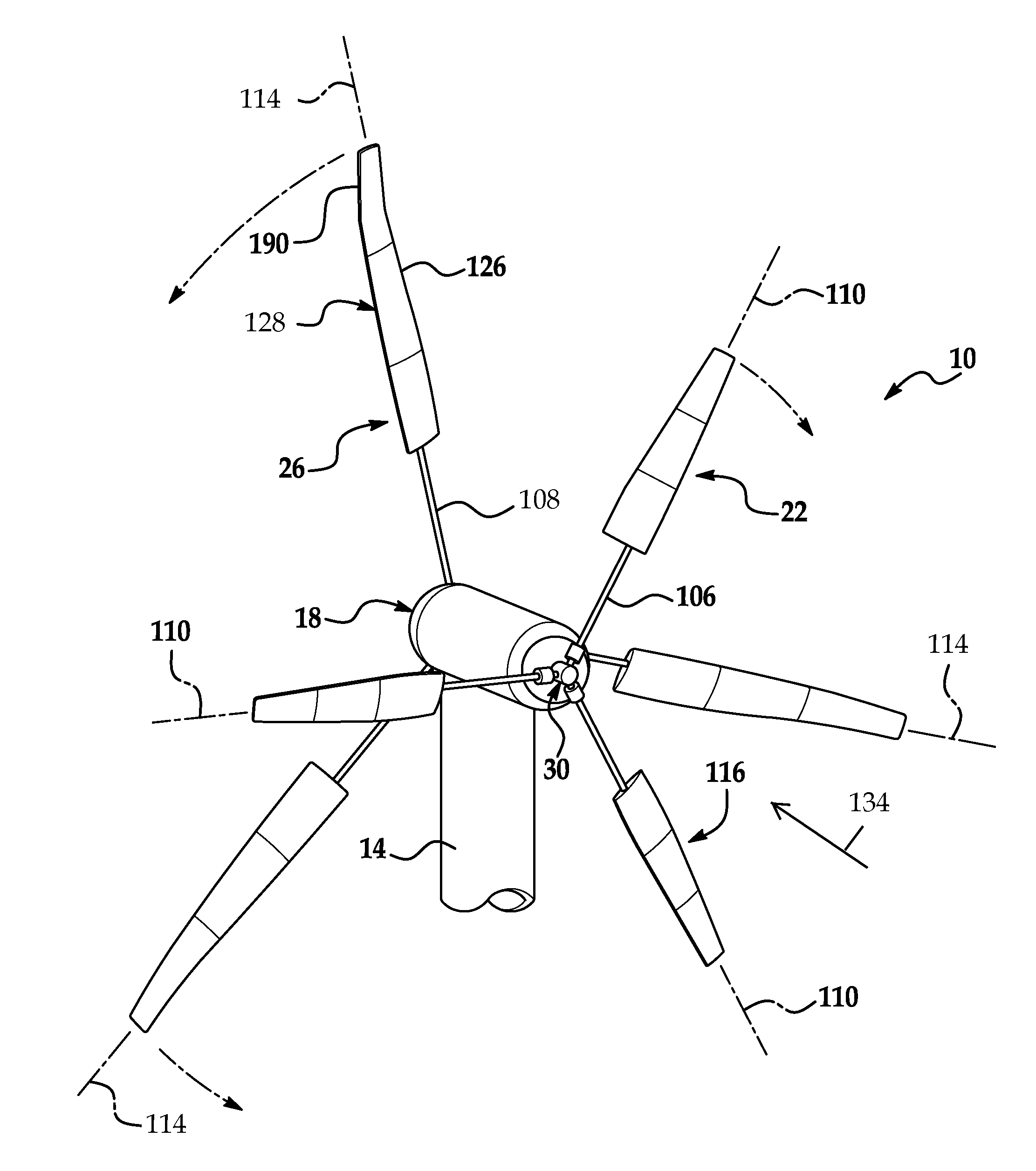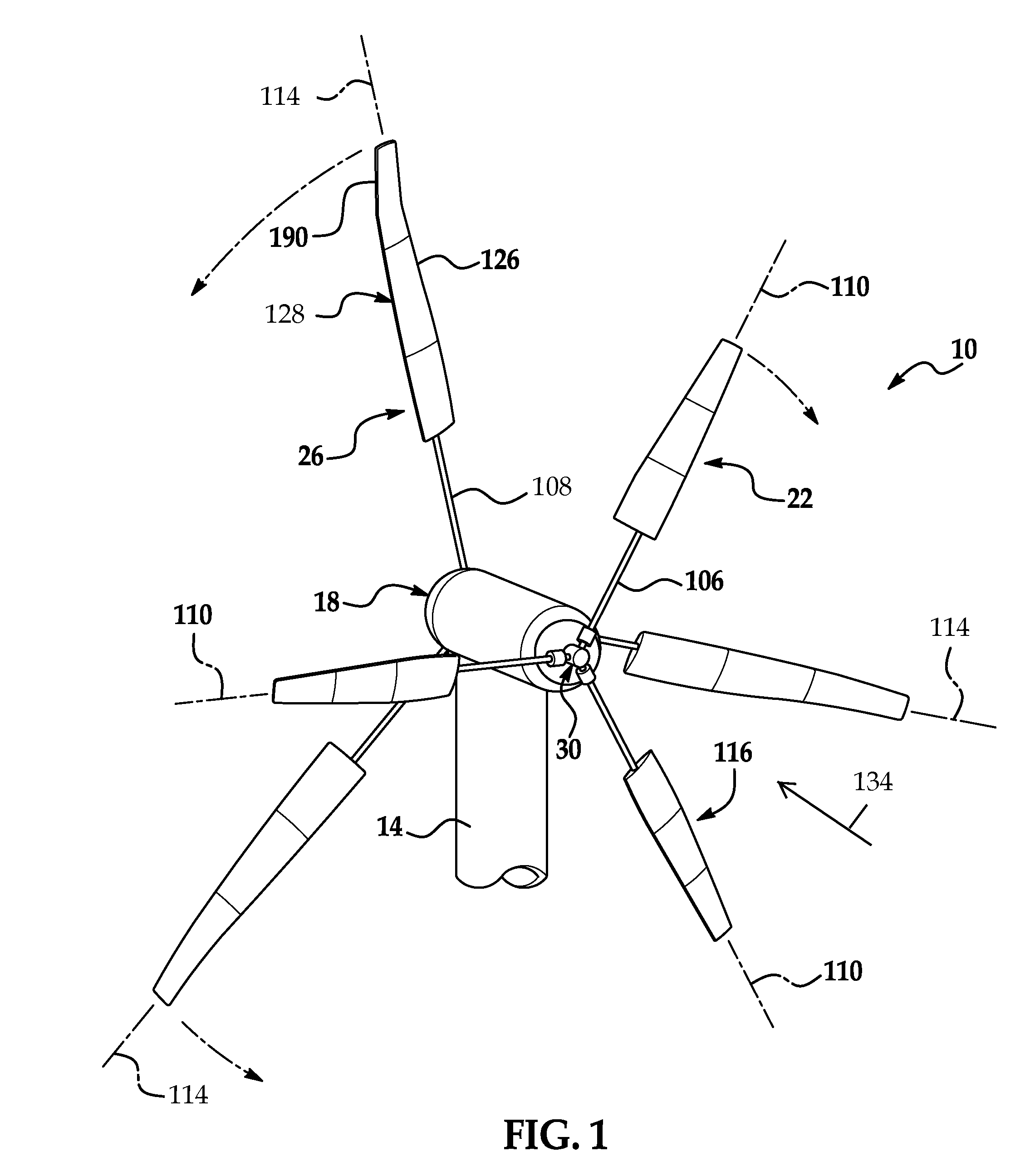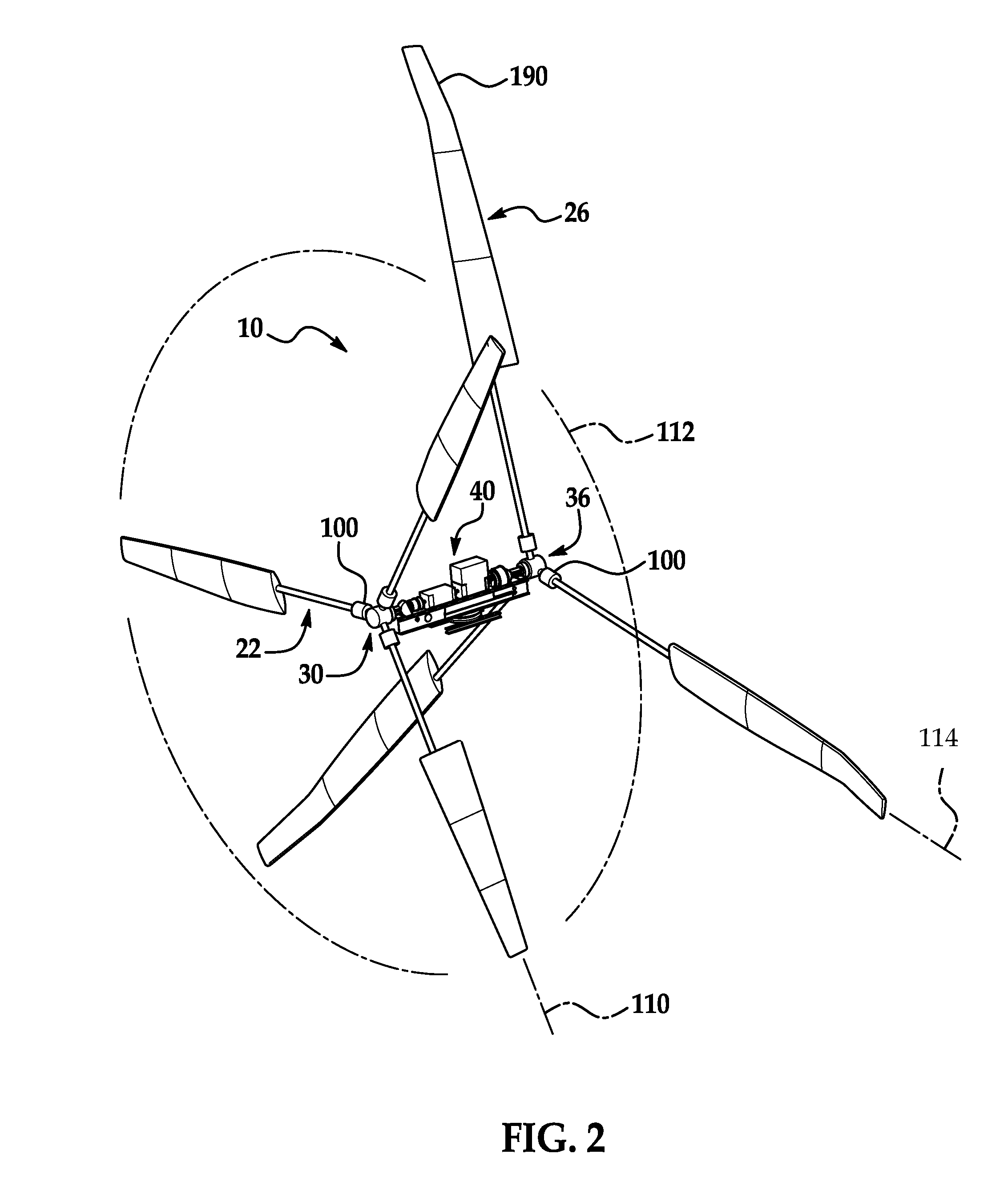Independent variable blade pitch and geometry wind turbine
a technology of variable blade pitch and wind turbine, applied in the direction of wind turbines, machines/engines, wind energy generation, etc., can solve the problems of large windmill-type structures, low efficiency rates, and inability to adjust, so as to increase the adaptability of the wind turbine to the wind conditions, increase the electrical output and efficiency, and increase the ability to harness the wind energy
- Summary
- Abstract
- Description
- Claims
- Application Information
AI Technical Summary
Benefits of technology
Problems solved by technology
Method used
Image
Examples
Embodiment Construction
[0020]Examples of an inventive wind turbine 10 are shown in FIGS. 1-6. Referring to FIGS. 1 and 2, a wind turbine 10 includes a tower 14 (partially shown) anchored to a foundation (not shown) secured to the earth by means known to those skilled in the field. Tower 14 is typically 200-300 feet in height depending on the application. Secured to the top of the tower is a nacelle 18 housing power transmission equipment 40 described in further detail below. Although the nacelle 18 is illustrated atop tower 14, it is within the scope of the invention that the nacelle 18 could be mounted to other structures or towers of alternate heights and tower constructions.
[0021]In the example shown in FIGS. 1 and 2, wind turbine 10 includes a front rotor 22 positioned at one end of the nacelle 18 and a rear rotor 26 positioned at the opposite end of the nacelle 18 as generally illustrated. Hereinafter, front rotor 22 is referred to as first rotor 22, and rear rotor 26 is referred to as second rotor 2...
PUM
 Login to View More
Login to View More Abstract
Description
Claims
Application Information
 Login to View More
Login to View More - R&D
- Intellectual Property
- Life Sciences
- Materials
- Tech Scout
- Unparalleled Data Quality
- Higher Quality Content
- 60% Fewer Hallucinations
Browse by: Latest US Patents, China's latest patents, Technical Efficacy Thesaurus, Application Domain, Technology Topic, Popular Technical Reports.
© 2025 PatSnap. All rights reserved.Legal|Privacy policy|Modern Slavery Act Transparency Statement|Sitemap|About US| Contact US: help@patsnap.com



